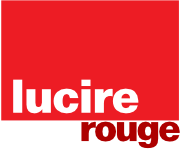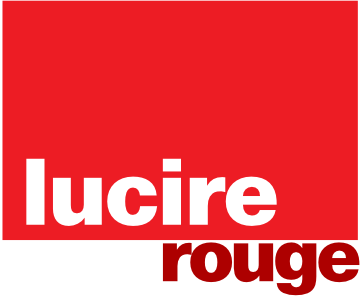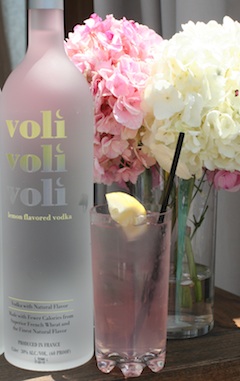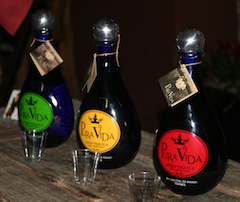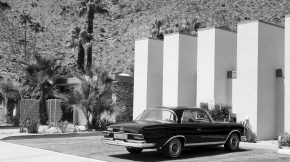The scene along the Seine: Viking’s Paris and the heart of Normandy
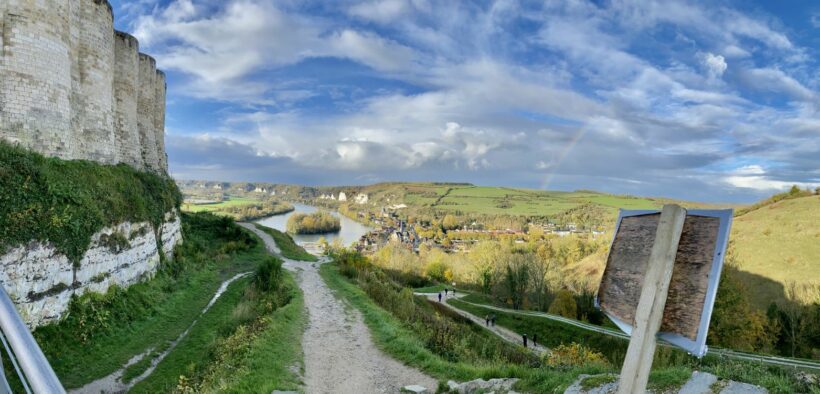
There’s no better public transportation system than the Paris Métro when it comes getting you from A to B, and in some cases, right up to the front door of whatever museum, park, market, or other place that strikes your fancy. It even extends well into the suburbs and out to Versailles, as well as other impressive palaces-turned-museums like Château de Malmaison and Château de Chantilly. A soujourn into the French countryside for a deeper dive into history, gastronomy, and wineries, on the other hand, may be impacted by how much holiday time you’ve got. And if your life and career (especially in the US) dictates an average 10 to 14 days, Viking Cruise’s Paris and the Heart of Normandy itinerary provides a perfect way to enjoy France’s version of a well rounded “town and country” adventure.
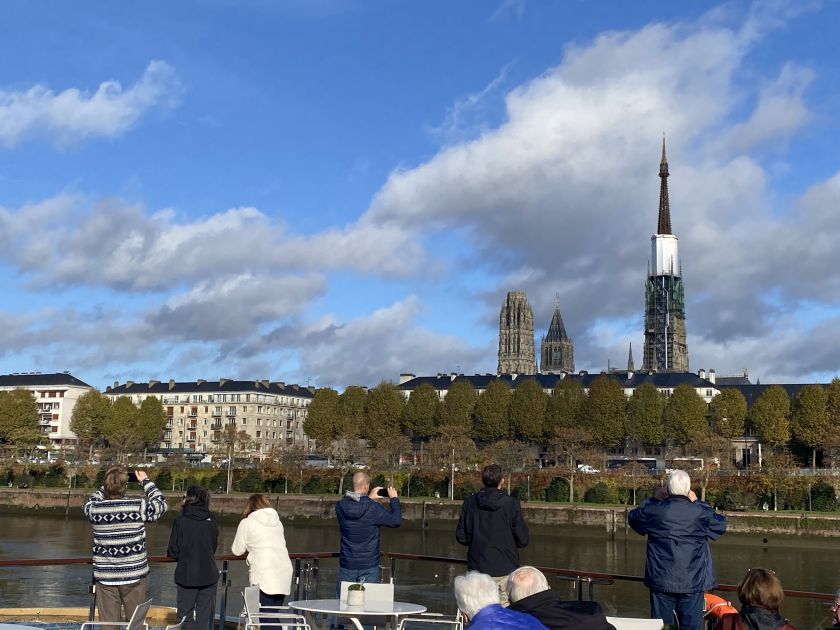
Approaching Rouen aboard the Viking Fjörgyn
The idea of swapping the necessity of a car rental and several hotel reservations for one floating hotel along the Seine is actually very appealing, especially if you’ve never visited northwestern France, or haven’t visited it since your year-abroad or gap-year trip. As one would expect from any high-end river cruise, several beautiful villages and towns on the cruise route are alive with adorable cafés, green parks, and small museums with impressive collections. All the excursions and days in port are planned with care so you can get the full-on experience of that town’s must-see château, museum, or natural wonder, but still have a few hours of free time to stumble into a hidden gem or two that guarantees bragging rights back home.
Our trip was aboard the Viking Fjörgyn, launched in 2019 and designed expressly for travel up and down the Seine. The cruise line’s stateroom hallmarks found on larger river cruise ships—streamlined Scandinavian interiors, clever and generous storage space, luscious bath amenities, well appointed balconies, wifi, big-screen TV with trip-related programming, and lovely bedding—are in place, but on a smaller scale. Even with that, the cruising experience is unquestionably comfortable, and the crew-to-passenger ratio (about one-to-three) ensures personalized and friendly service.
Having an approachable crew with a palpable passion for Normandie’s history and culture also adds a degree of specialness and empowers guests to customize their journey in real time. Furthermore, this particular itinerary is a very social experience, not only because of the small number of passengers, but also everybody who is on board is passionate about some aspect of French culture, history, and way of life. This establishes common ground from the moment you embark in the shadow of the Eiffel Tower.
Even with so many places to grab a bite throughout the tour (and you’ll want to), it is reassuring to know the meals and snacks served aboard the ship are generally consistent and fresh. The mid-point of the trip is marked by an indulgent buffet dinner with an emphasis on traditional Norman dishes and regional cheeses and charcuterie purchased at the ports of call leading up to it. Although at least one free excursion is offered on every day of the cruise, there’s always the option to sit it out and explore the city or town at your leisure, especially if you are already familiar with Paris and want to do the museum at your pace, or want to try out hiking trails or bike rentals at the other destination. Excursions involving an extra fee include guided tours of high-profile sites such as Versailles or Monet’s home in Giverny, and others involving a meal, cooking class, or wine tastings. However, you can book a spot on complimentary excursions ahead of the cruise with confidence knowing you have the option to participate if you wish to.
As the name of the itinerary implies, the 10-hour day dedicated to the beaches of Normandie is the heart and soul of the trip. Both the US-focused and British Commonwealth World War II excursions are intense and deeply moving, led by guides from the area with solid storytelling skills. Their discourse provides a heartfelt context to the activities, while the scenery connecting the beach battlefields, cemeteries, monuments, and small museums makes one wonder how the idyllic rural vistas along the route ended up being the backdrops for so much tragedy.
Given that most of the passengers are from the States, the US–Omaha Beach tour is more popular. According to my travel companion who did this tour (his grand-uncle had landed in the area and fought in the Battle of the Bulge) in one of four smaller groups felt a strong sense of community with others with family connections to World War II. He found the visit to the American cemetery and ceremony honouring surviving veterans powerful and walking along a small stretch of Omaha Beach humbling. This, in turn, gave him a greater appreciation for the presentations at Omaha Beach Memorial Museum and D-Day Museum.
I opted for the Commonwealth Tour, commemorating the participation of British, Canadian, Australian, and New Zealand armies. It was a more intimate outing (25 people) that provided a different perspective on the war from what I had studied in my American high school and French university studies. In addition to our guide’s take on the various historic sites, it was interesting to observe a group of Canadians, an Australian couple, and a British couple trade notes as they actively searched for headstones and memorabilia during our visits to several small Commonwealth cemeteries and museums such as the Juno Beach Centre (honouring the Canadian troops) and the Pegasus Memorial dedicated to the 6th Airborne Division of the British Army.
Prior to visiting the battle sights, we stopped in Bayeux, the first town at the end of the war to be liberated in June 1944, to start the day with a viewing of the Bayeux Tapestry (depicting the Norman Conquest of 1066) as well as David Hockney’s A Year in Normandie (his lyrical take on the tapestry, on display through April 23, 2023) inside an 18th-century monastery-turned-museum. After an opportunity to stroll the town, the group headed to lunch at Hôtel Le Lion d’Or, which not only has excellent food and plenty of apple cider, but also many interesting ties to the battlefields. Even with a widely acclaimed chef (Thomas Busnoult), the hotel’s greatest claim to fame is that it housed the cast and crew of The Longest Day during filming in 1961. The lobby is a significant gallery in its own right as it is packed with photos and memorabilia from star John Wayne, his high-profile co-stars, and other celebrities who popped in the years before and after, including Tom Hanks.
There’s more to this extended history lesson than World War II, of course. There is plenty of time dedicated to the Middle Ages, and the first stop after Paris is the La Roche Guyon castle, built in the 12th century, which perfectly embodies the intrigue of the royal families who fought for power and control over the domaine. When the weather permits, there’s either an optional tour around or bike ride near Claude Monet’s beloved Giverny. The ship docks a few kilometres away just outside of Vernon, which has a small museum dedicated to Monet’s works as well as several specialty food shops (including Boucherie Gaignard, Boulangerie Festival des Pains, and Fromages en Detail) packed with many picnic-ready things as well as gift items packaged for transport to friends back home. On rainy days, the Cookie Cat Café delights with home-style country dishes and cuddly cats, with part of the bill going towards area animal welfare groups.
While Rouen merits a trip of its own, Viking’s overview and walking tour do an excellent job of giving you a feel for its layout as well as its multifaceted place in French history. It certainly had me contemplating a trip back. This is a good thing, as Rouen is a great city-break destination in its own right. Several side streets near the main shopping district and Cathédrale Notre-Dame de Rouen (one of Monet’s most famous muses) are home to boutiques, tea rooms, and bars that together project Paris St Germain de Près and Latin Quarter vibes. It is home to nine top-notch museums with no admission charge, including the Rouen Museum of Fine Arts. There are several notable restaurants including Le Couronne (dating to 1345), one of the oldest in France as well as the place that launched Julia Child’s lifelong culinary journey. Church of Saint Joan of Arc is on the site of Place du Vieux-Marché, where the young heroine met her end in 1431. Soaring stained glass windows cast a glorious wash of colour on to the sparely furnished interiors, rendering it a calming sanctuary.
Before returning to the suburbs of Paris for visits to the 18th and 19th centuries via Château de Malmaison (complimentary) and Versailles (for an extra fee), the ship docks at Petit Andely for an easy hike up to the remains of Château Gaillard, the domain of Richard the Lionheart. Although this pretty village mainly consists of a main street and a pretty church, there are quite a few ways to reward yourself for making the trek. There are several romantic white tablecloth restaurants, but Le Cafe du Petit Andely provides a solid casual option as a craft beer lover’s oasis (especially with Richard the Lionheart beers, of course) and unofficial local hangout provides a nice casual option. Food offerings are spare, but the kitchen does a respectable croque-monsieur that stands up well to the heady brews. There are even a couple of surprisingly fashionable shops, including Marjoly Boutique and Atelier Voltaire, packed with mostly made-in-France statement pieces, jewellery, and handmade woven scarves.
Given that our readership encompasses Generation X and millennials, this is a good point to dispel any preconceptions. Yes, Viking’s cruises still skew toward baby boomers. However, the experience has a lot to offer younger guests on and off the ship. With an itinerary like this, you will discover some of the older travellers you met on the first day have as much or more energy than you do (and may even be more physically fit!). They can often end up being that inspirational presence that pushes you to walk all the way up to the top floor of the castle or take a moment to chill out and appreciate the scenery on the top deck and just breathe. •
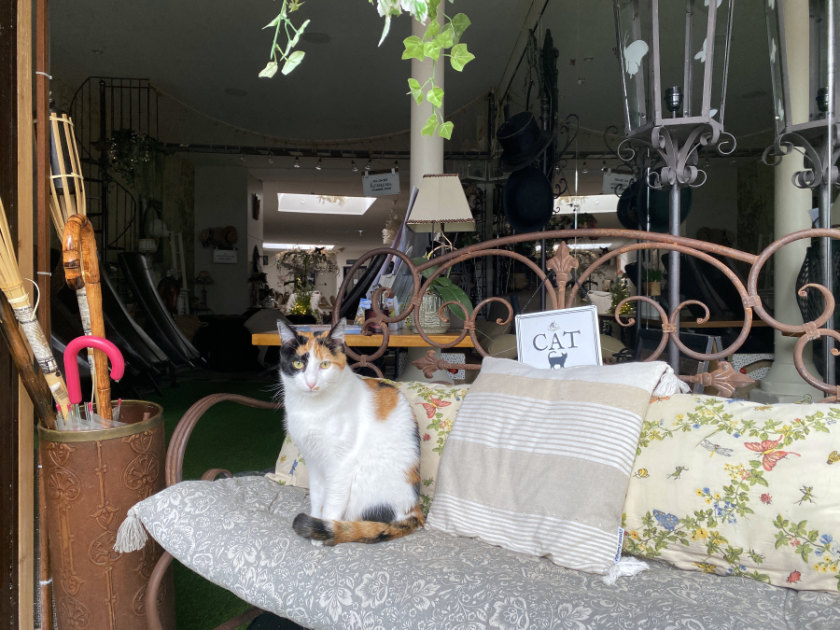
Vernon’s Cookie Cat Café
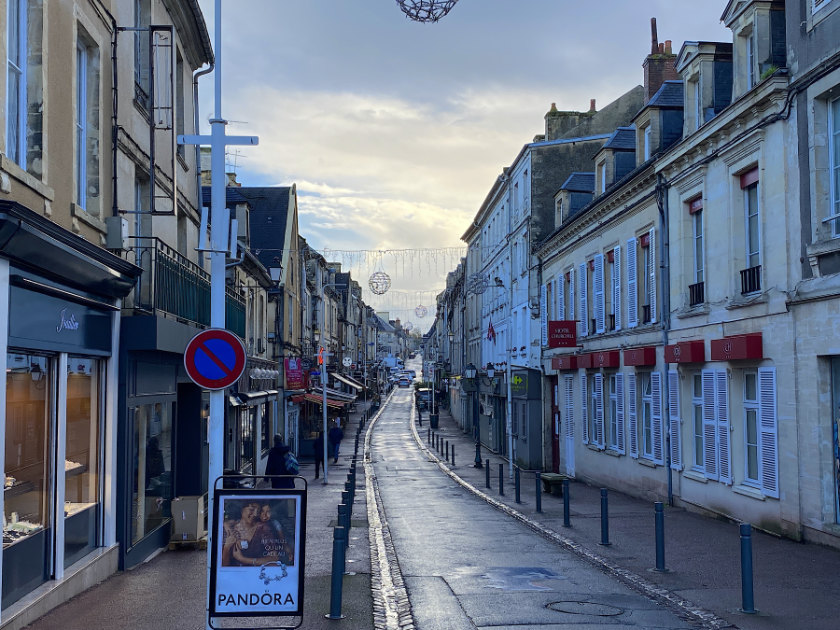
Bayeux extends far beyond the tapestry that immortalized the ascent of William the Conqueror
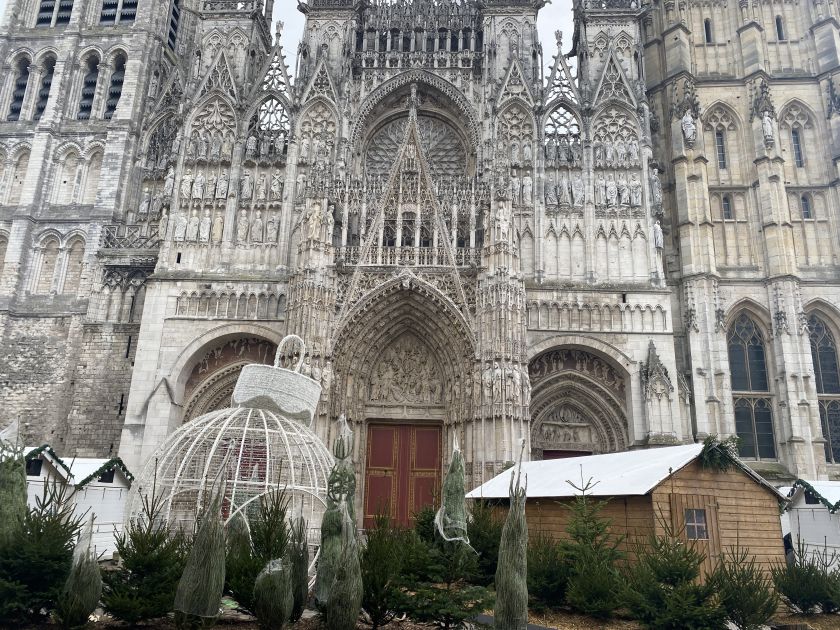
Notre Dame de Rouen, one of Claude Monet’s many architectural muses
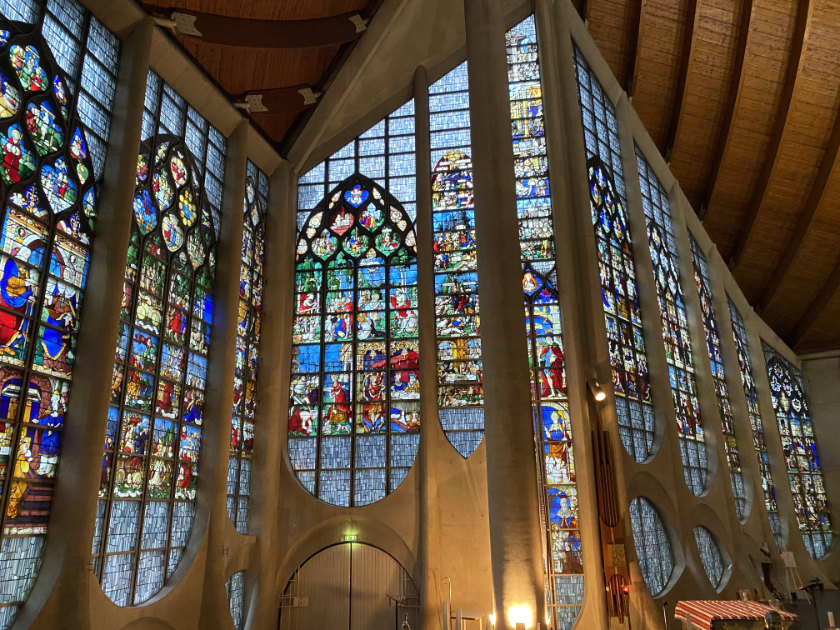
The Church of St Joan provides a modern counterpoint to the legendary gothic Notre Dame de Rouen
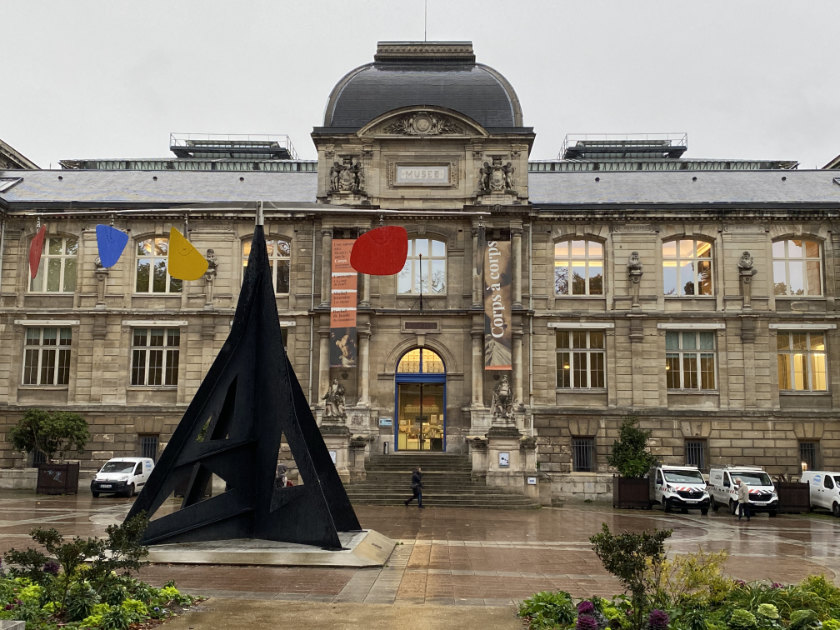
Rouen’s Museum of Fine Art is full of fascinating art through the centuries
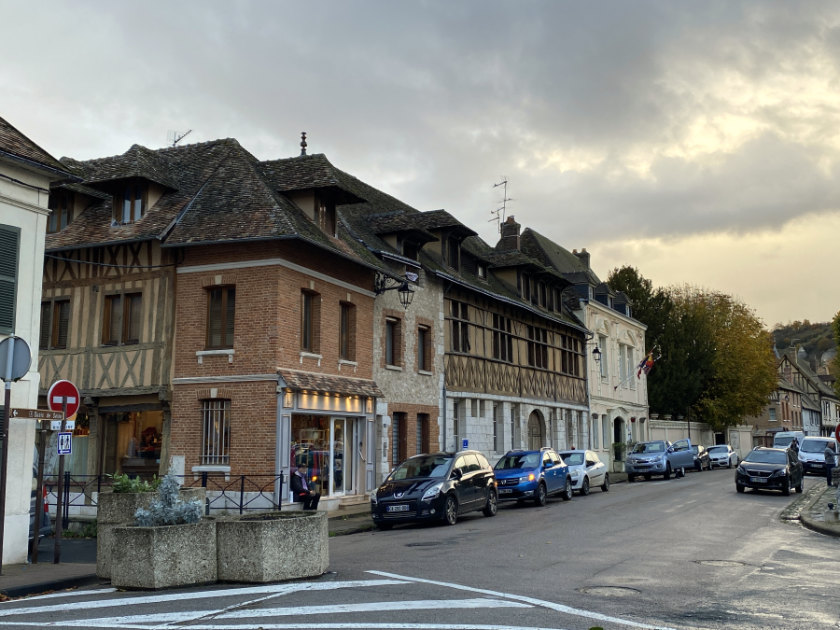
Atelier Voltaire, seen from the sidewalk seating of Le Café du Petit Andely, is one of many surprises awaiting visitors after the hike up to Richard the Lionheart’s Le Chateau Gaillard
For more information about Paris and the heart of Normandy and other itineraries aboard Viking, visit vikingcruises.com.
